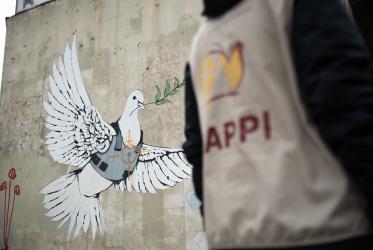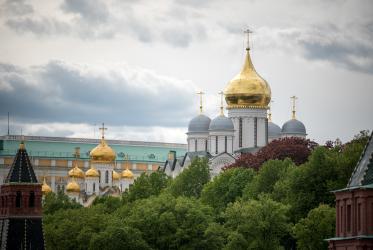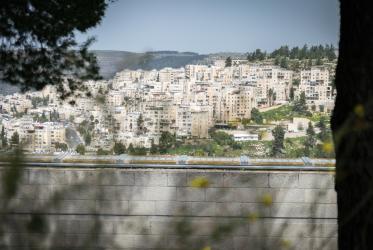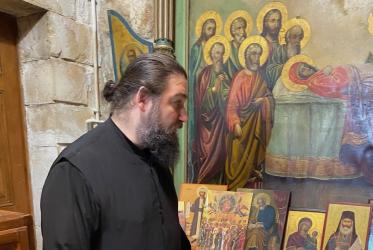By Gemma Abbs
[This article is being published today in French by the newspaper La Tribune de Genèvewww.tdg.ch]
If Mary and Joseph had to get to Bethlehem this year, they would find themselves confronted with a 9-metre high concrete wall and a sophisticated, high-tech checkpoint.
All visitors in and out of the once vibrant city where Jesus was born have to pass through a checkpoint that has recently been upgraded. It was opened on 15 November and is called the "Bethlehem 300 checkpoint".
Passing through this terminal, you feel a bit like a sheep being herded as you go through one turnstile after another. If one of the turnstiles stops or gets stuck as you pass through, the remote voice of an Israeli soldier coming out of nowhere instructs you to wait, or try again to go through.
Whilst walking through the terminal, you are constantly being surveyed from above by soldiers on the roof, who have their rifles poised and directed at you. Soldiers also patrol the terminal with dogs. For a young child, this might be an extremely frightening experience.
This checkpoint is the only way to pass from Jerusalem to Bethlehem, a city that is rapidly being strangled. Jerusalem is only a 15-minute drive away, and many Palestinians need to pass through here on a daily basis. It gives a whole new meaning to "rush hour commute". Palestinians in Bethlehem describe themselves as living in a big open prison. It is not enough to try to improve the conditions within the prison; Palestinians want their freedom.
The Israeli government refers to the Wall or separation barrier as the "security fence", stating that it has been built to give Israel security from suicide bombers. No one would, of course, deny a country the right to defend itself from such attacks. However, one has to question why in so many places the separation barrier is being built on Palestinian territory and not on the internationally recognized border - the Green Line.
The key to understanding the rationale behind building the Wall here is Israel's settlement policy. There is a large bloc of settlements in the Bethlehem area. The Wall here has been built to separate (and presumably protect) these settlements from the Palestinian areas. The route of the Wall in the Bethlehem area suggests that Israel will annex these settlements - which are illegal under international law - to Israel.
When confronted with the Wall and the terminal building in Bethlehem, you get the impression that you are passing through an international border crossing. However, you are not crossing from Israel to the West Bank, you are already in the West Bank. The people of Bethlehem are enduring searches when passing from one part of Palestinian territory to another.
Since the building of the Wall began here, Bethlehem's economy has taken a serious downturn. Residents, and the Bethlehem Municipality, fear that the new terminal will have a huge impact on tourism, which produces 80% of the city's income.
Tourists only trickle in these days compared with before 2000. The once bustling road between Jerusalem and Bethlehem used to see good trade. Now all the shops on this road, located next to Rachel's Tomb, are closed. There would at least be one piece of good news for Mary and Joseph this year - if they had been able to negotiate the new checkpoint, there would be plenty of room at the inn!
As you sing about the little town of Bethlehem this Christmas, say a prayer that once again the town of Christ's birth will become a holy, sacred place, free from guns, soldiers and walls.
Gemma Abbs works in Jerusalem as communication officer of the World Council of Churches-sponsored Ecumenical Accompaniment Programme in Palestine and Israel www.eappi.org.

Bethlehem 300 checkpoint - (c) Rikke Nicolaisen/WCC







